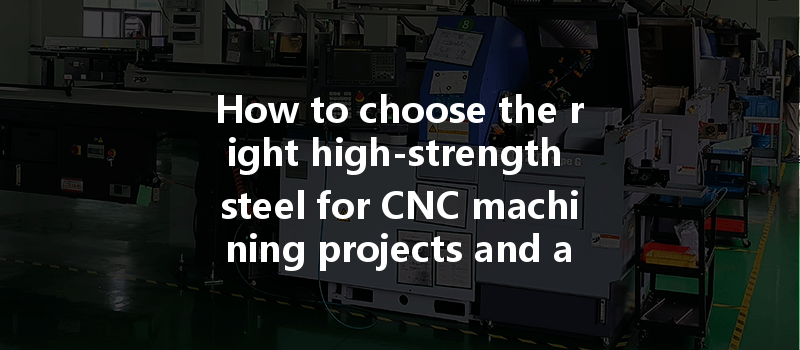: The Importance of Steel in CNC Machining
Did you know that high-strength steel is often the material of choice for over 40% of advanced engineering applications, thanks to its remarkable strength-to-weight ratio? As industries evolve, the demand for precise and durable components has soared, making the choice of material more critical than ever. In CNC (Computer Numerical Control) machining, selecting the right high-strength steel can significantly influence the quality, performance, and longevity of the final product.
Whether you’re designing parts for the automotive, aerospace, or military sectors, understanding how to choose high-strength steel tailored to your specific application is paramount. This extensive guide will arm you with the knowledge and strategic approach needed to make informed decisions about high-strength steel for your CNC projects.
—
Understanding High-Strength Steel: What Is It?
High-strength steel is a classification of steel that possesses superior strength and durability compared to conventional steel. These alloys are engineered for applications where tensile strength, yield strength, and fatigue resistance are crucial. The enhancements in mechanical properties often come from the combination of carbon, manganese, and various other alloying elements.
Categories of High-Strength Steel
High-strength steels generally fall into several categories:
Applications of High-Strength Steel
—
Step-by-Step Guide to Choosing High-Strength Steel for CNC Machining
Choosing the right high-strength steel for CNC machining can be broken down into several key steps. Each step involves specific considerations that dictate the final performance and cost-efficiency of the machined parts.
Determine the Requirements of Your Project
Before delving into material specifics, start by defining the essential requirements of your project:
Review Material Properties and Specifications
Once project requirements are established, verification through the material’s specifications is next. Common properties to consider include:
Understanding specifications will prepare you for making material decisions later in the process.
Consider the Machining Capability
CNC machining requires a detailed understanding of how different materials respond to machining techniques:
Evaluate Cost and Availability
High-strength steels can vary significantly in cost based on their specifics, properties, and availability in the market. Factors that contribute to cost differences include:

Check Compliance with Industry Standards
Every industry will have specific standards or certifications that high-strength steel must meet. Compliance with these standards guarantees quality and safety, thus reducing liability for manufacturers:
Test and Analyze Material Properties
Before committing to a specific steel, perform tests to analyze mechanical properties. Conduct examinations such as:
Having empirical data helps solidify your choice and ensures performance expectations can be met.
Collaborate with Experts
Engaging with engineers, machinists, or metallurgists who specialize in high-strength steel can provide invaluable insights. They can assist in:
Collaboration can often yield creative solutions and alternatives you may have overlooked.
—
Challenges and Solutions in CNC Machining High-Strength Steel
While choosing high-strength steel is critical, the actual machining process presents its own set of challenges. Being prepared to tackle these can safeguard against delays or inferior results.
Tool Wear and Durability
High-strength steel is notorious for causing premature tool wear. To combat this:
Chip Formation Issues
Challenging chip formation is a common issue when machining high-strength steel. Poor chip management can lead to additional work, tool damage, and quality issues.
Heat Generation
Excessive heat can cause thermal warping and affect dimensional accuracy. To counter this:
Surface Finishing Requirements
High-strength steel may require additional finishing processes to meet surface roughness and aesthetic standards.
—
: Choosing the Right High-Strength Steel is Critical for Success
Choosing the right high-strength steel for CNC machining is a multifaceted process that requires careful consideration of project specifications, material properties, machining capabilities, and industry standards. Understanding these elements will not only help you achieve superior quality in your products but also enhance operational efficiency.
High-strength steel holds tremendous potential across various applications, whether in the automotive, aerospace, or manufacturing sectors. As technology advances, the ability to select and work with high-strength material will become increasingly valuable.
By following the outlined steps and being mindful of the potential challenges, you can ensure that your CNC machining projects are both successful and sustainable.
Ultimately, your choice of material is crucial in determining the effectiveness of manufacturing processes, the performance of the finished product, and your company’s reputation in the industry. So, take time to explore all available options, seek expert advice, and invest in quality materials for the best results.
This blog serves as an extensive resource, guiding you systematically through the myriad factors influencing high-strength steel selection. By deeply considering your material choices, you can pave the way for innovation in your projects, ensuring they stand the test of time and meet the ever-evolving demands of modern engineering.






